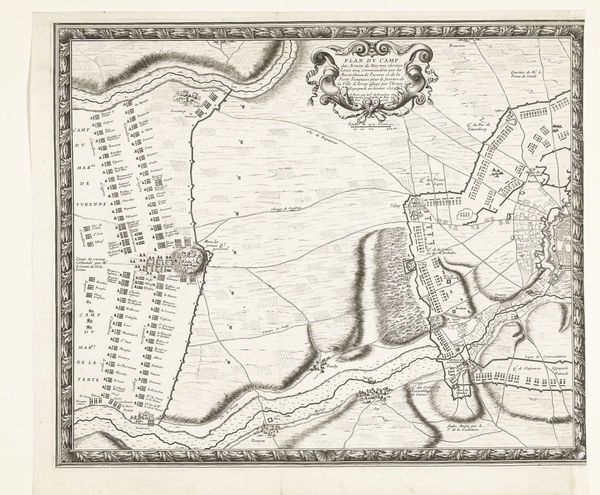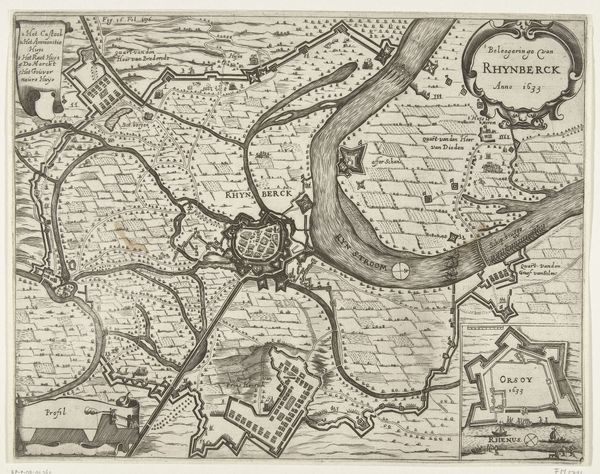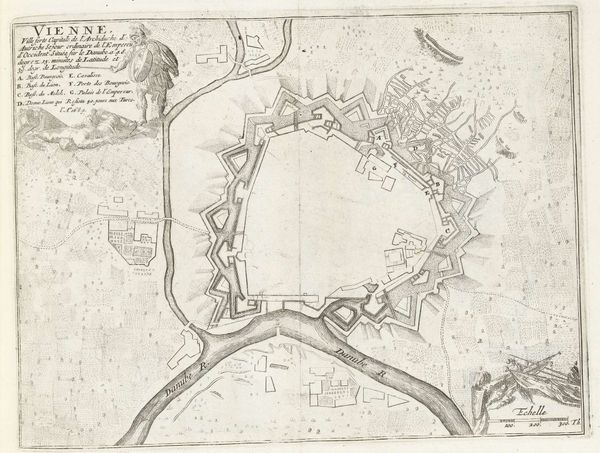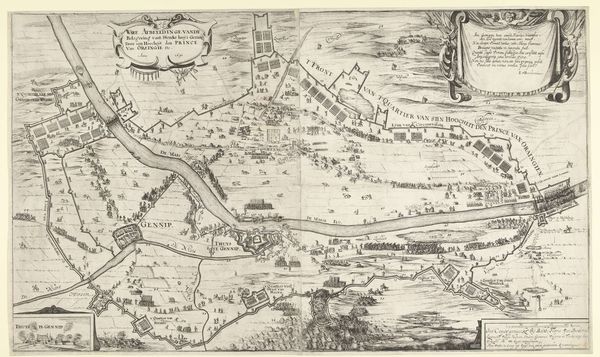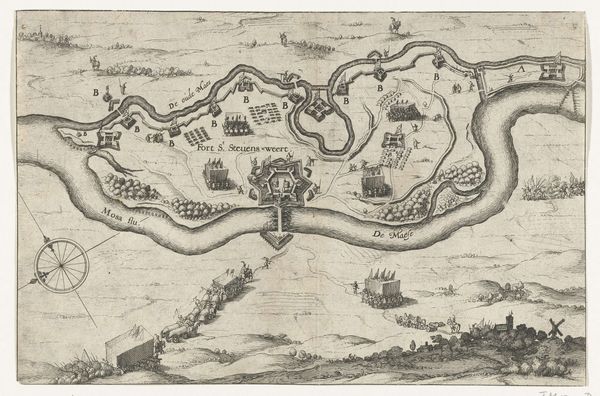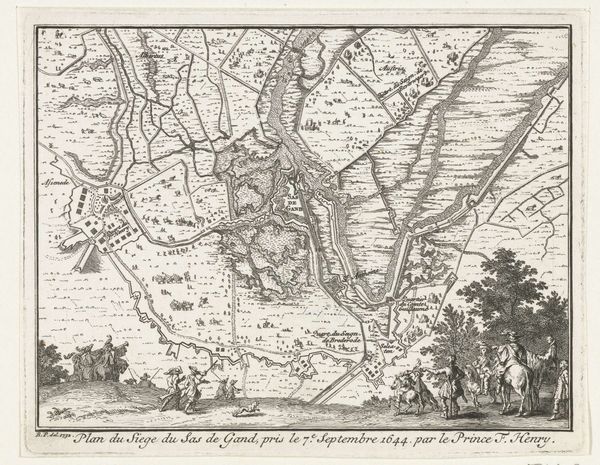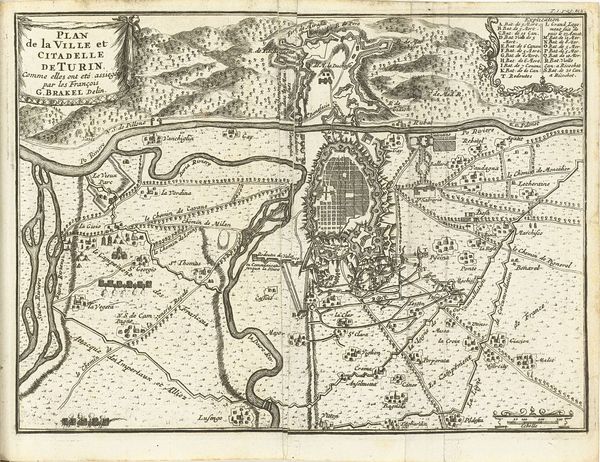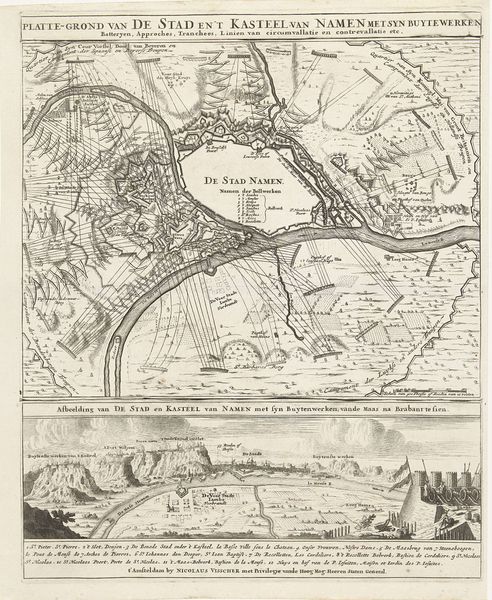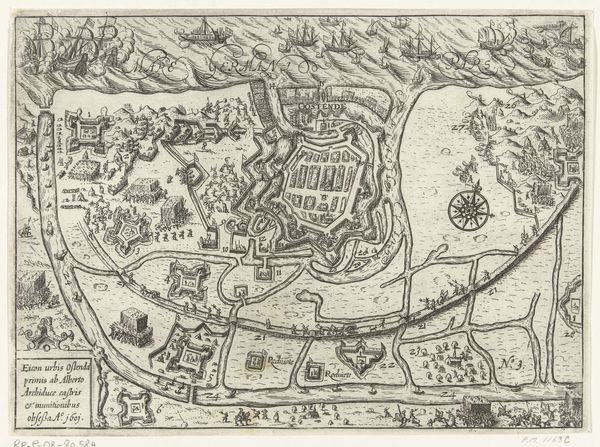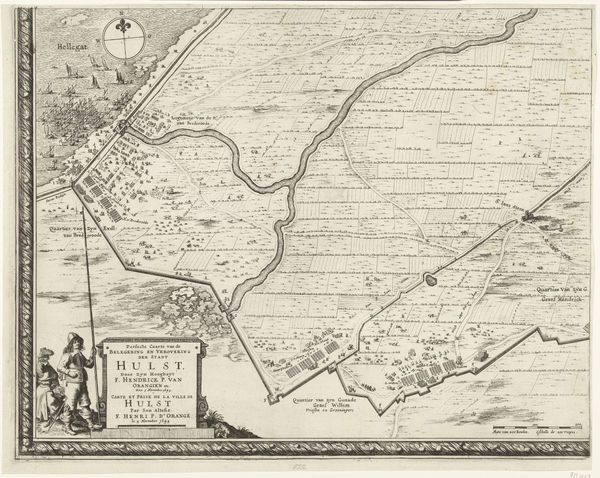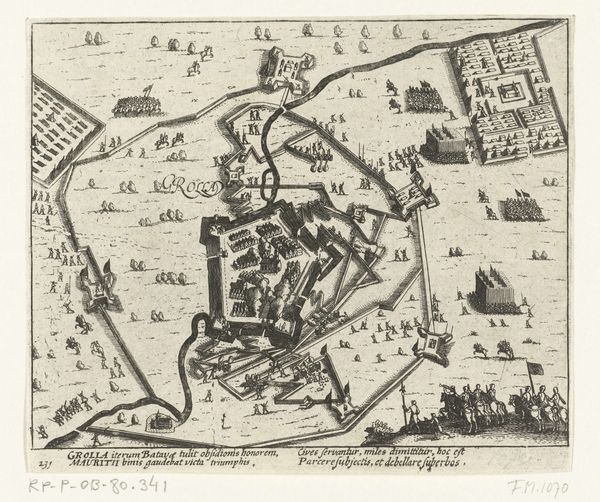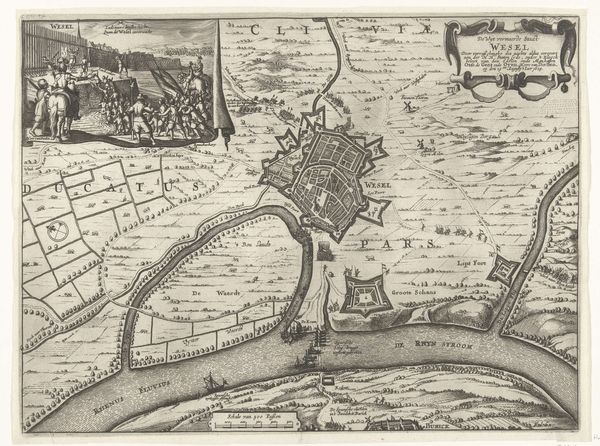
Kaart met de Franse legerkampen bij het ontzet van Arras (rechterplaat), 1654 1655
0:00
0:00
drawing, ink, engraving
#
drawing
#
pen drawing
#
mechanical pen drawing
#
pen illustration
#
pen sketch
#
old engraving style
#
personal sketchbook
#
ink
#
pen-ink sketch
#
pen work
#
sketchbook drawing
#
cityscape
#
history-painting
#
sketchbook art
#
engraving
Dimensions: height 451 mm, width 521 mm
Copyright: Rijks Museum: Open Domain
Editor: This is "Kaart met de Franse legerkampen bij het ontzet van Arras (rechterplaat)", made in 1655 by Nicolas Cochin. It’s a drawing, an engraving actually, depicting a cityscape. I find it really intriguing how detailed it is, almost like a technical diagram, but with this beautiful artistic flourish in the borders. What catches your eye? Curator: The visual economy is fascinating. Observe how Cochin uses line – its varying weight and density – not to represent the natural world mimetically, but to articulate a complex network of power and spatial relations. Note how the linear structures denoting the encampments contrast with the organic flow of the river. Does that dissonance speak to you? Editor: Absolutely, the regimented camps versus the river feels deliberate, creating a visual tension. What do you make of the blank spaces? Curator: The negative space is not merely absence; it's an active element. Consider how the voids punctuate the dense areas, forcing the eye to jump between points. It invites speculation: is it an assertion of French dominance, framing their military camps? It highlights their imposed order and their structured military strategy across this territory. What function do you perceive in the borderline figures? Editor: I see. And the figures at the bottom, are they part of the map, or observers of it? It almost adds a sense of scale to the overall drawing. It shows how vast and detailed this historical event was. I'm now looking at it from an angle of Cochin showing the military movements but at the same time wanting the viewer to imagine it happening in real time. Curator: Precisely. Cochin is masterfully manipulating perspective and representation. It compels us to consider the very act of mapping as an ideological exercise, asserting control through visual means. The piece certainly yields different meaning after discussing this further. Editor: This has really opened my eyes to how much a "simple" map can communicate. Curator: Indeed, analyzing it formally reveals layers of intention and meaning embedded within its structure.
Comments
No comments
Be the first to comment and join the conversation on the ultimate creative platform.
